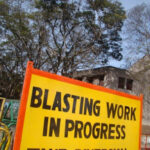Supreme Court of Canada Upholds Broad Environmental Reporting Requirement

One of the key requirements in environmental law is the duty to report certain incidents that have impacted or may impact the environment. In many cases, deciding whether to report an incident is easy. For example, if a train derails and spills hundreds of litres of a toxic substance into a lake, clearly you must report this incident. But sometimes determining whether you must report an incident isn’t so simple, especially if it’s unclear that the environment has actually been harmed. And if you decide not to report the event and environmental officials disagree with your assessment, you could face an environmental violation for failing to report (in addition to any other violations relating to the incident). That’s exactly what happened to a company in Ontario. Here’s a look at that case and the recent decision by the Supreme Court of Canada, which upheld a broad reporting duty under that province’s environmental law.
THE CASE
What Happened: During a highway blasting operation, flyrock damaged a house and car. The blasting company reported the incident to the Ontario Ministries of Transportation and Labour but not Environment. The MOE charged it with violating Sec. 15 of Ontario’s Environmental Protection Act (EPA) by failing to report the discharge of a contaminant that caused or was likely to cause an adverse effect. The trial court dismissed the charge, ruling that the reporting requirement only applied to ‘environmental events.’ But the appeals court ruled that, under the EPA, flyrock fit the definition of ‘contaminant’ and ‘adverse effect’ included property damage. And the Court of Appeal agreed. So the company appealed again.
What the Court Decided: The Supreme Court of Canada dismissed the appeal, ruling that the company should’ve reported the incident to the MOE.
The Court’s Reasoning: The Court explained that because the EPA was a ‘remedial’ law, it should be interpreted broadly to fulfill its objective of protecting the environment. The purpose of the reporting requirement was to ensure that the MOE’not the notifying company or individual’investigates the reported event and determines what remedial steps, if any, are required. Under the EPA, a discharge must be reported if: 1) it was out of the normal course of events; and 2) it had or was likely to have an adverse effect on the environment. The Court rejected the company’s argument that the natural environment had to be impaired for an incident to be reportable, noting that the definition of the term ‘adverse effect’ included, among other things, injury or damage to property. But the Court did agree that the adverse effect caused by the event must be more than trivial to be considered reportable.
Applying these conclusions to the case at hand, the Court found that the company had discharged flyrock into the natural environment during the blasting. This discharge wasn’t in the normal course of events and caused substantial property damage. So the company was required to report it under the EPA, concluded the Court [Castonguay Blasting Ltd. v. Ontario (Minister of the Environment), [2013] SCC 52, Oct. 17, 2013].
ANALYSIS
Justice Abella, who wrote the majority opinion in Castonguay, succinctly summed up the key lesson from the case: ‘When in doubt, report.’ That is, if you’re not certain an incident should be reported to environmental officials, err on the side of caution and report it. Although this decision only applies in Ontario, other jurisdictions use very similar terms and definitions in their environmental reporting requirements. So don’t be surprised if courts in other jurisdictions begin applying the Castonguay analysis to your jurisdictions’ environmental law. Thus, all companies should have clear reporting policies based on the requirements of the environmental law in their jurisdictions. And to be safe, such policies should generally take a conservative approach that advocates reporting incidents that the government could reasonably expect companies to report. (For more information on incident reporting, see ‘Environmental Incidents: 8 Spill Reporting Lessons.’)